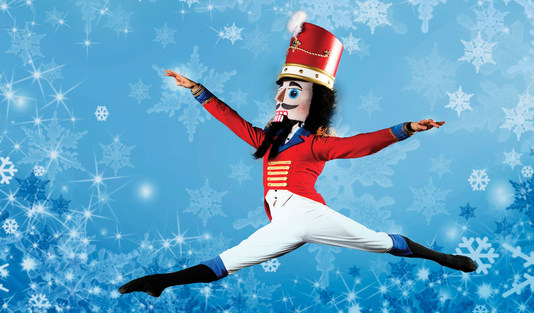

What are we going to do this December? The same thing we do every December: learn about Tchiakovsky's ballet, The Nutcracker. I mean, why not? Tchaikovsky is widely regarded as a master composer, the music is interesting and familiar, the kids love the story, and ballet is an important art form to expose kids to. On the other hand... I am so sick of The Nutcracker. My Nutcracker lessons have typically gone like this:
First grade: Tell the story and throw my shoe across the room. Explain what a ballet is. The kids pantomime the story while I play musical highlights and narrate, aka the "Nutcracker game." Second grade: Review the story and about ballet. Create motions based on listening maps I photocopied out of an old music textbook series. Play the Nutcracker game. Third grade: Review the story, ballet, listening maps. Play the Nutcracker game. (You see where this is going?) Fourth grade: Review the story, ballet, listening maps. Maybe make up a dance to one of the dances from Act II. Try to avoid playing the Nutcracker game. Fifth grade: Pretty much the same as fourth grade, if I can't get out of teaching The Nutcracker all together. (Why, for the love of Pete, do they love that Nutcracker game so much?!?)
So this year, I decided things needed to be a little different, a little more creative. You know, I've got this great SMART Board and all kinds of cool technology at my fingertips. Below are the lessons, many utilizing technology resources, that rejuvenated my Nutcracker unit this year.

Lessons for Primary Students (Grades K-2)
Tell/reenact the ballet version of the story. Act out Clara, the Nutcracker, and the Mouse King during the battle scene, culminating with hurling your shoe across the room at the imaginary Mouse King then dying dramatically when the Nutcracker defeats the Mouse King who has been distracted by Clara's thrown slipper (trust me, you absolutely have to do this for kindergarten and/or first graders).
Read aloud Susan Jeffers's beautiful picture book, The Nutcracker. After reading and discussing, listen to the Classics for Kids podcast episode "The Nutcracker" while flipping through the pages of the picture book. Discuss the differences between the picture book version and the ballet version.
Lessons for Intermediate Students (Grades 3-5)
Listen to selections from the Nutcracker and discuss the mood evoked by each. Guide the class in brainstorming a new idea for a story that could be written to accompany the music of the Nutcracker. After one idea is chosen, listen to each piece in turn and write the narration to match the mood of each song. Audio record the students narrating their story, and use GarageBand or other audio production software to pair the musical selections with the narration. Listen to my fifth graders' stories based on the music of the Nutcracker below!
Mr. Jones and the Miraculous Journey
[audio http://www.klsriley.com/wp-content/uploads/2011/12/Mr.-Jones-and-the-Miraculous-Journey.mp3]
The Adventures of Fred and Tiffany
[audio http://www.klsriley.com/wp-content/uploads/2011/12/Mr.-Jones-and-the-Miraculous-Journey.mp3]
Lessons for All Elementary Students
Discuss what a ballet really is. There is another great Classics for Kids podcast for this (I found this episode to be a little dry for my youngest students). Watch some videos of ballet dancers. YouTube is blocked in my school district, but I found some amazing videos on Vimeo of rehearsals for the Birmingham Royal Ballet's production of the Nutcracker here, here, and here. One of my students also brought in her mother's old pointe shoes that I shared with all of my classes.
Use pre-made or student created listening maps for guided listening of selections from the Nutcracker. This is great for the SMART Board. I scanned maps from an old music textbook series (I can't even remember which one now) and imported them into a SMART Notebook file. We use the different tools and pens to mark up the maps. I didn't have a map for the Spanish Dance, so one of my fourth grade classes used images from the gallery to create one. Identify form, melodic contour, instrument identification, and other elements. Use the maps to guide body movements to illustrate these elements. Older students can choreograph their own dances for the Act II dances. (See my fourth graders' dances here!)
Watch the "Nutcracker Suite" portion of Fantasia. Lead the students in identification of the songs and discussion of the relationship between the animation and the Nutcracker ballet story.
And the season would just not be the same without teaching and playing the Nutcracker game. For this activity, I made a SMART Notebook template of all of the roles in each "scene" of the Nutcracker game. I let the students choose roles and wrote their names on the template. We reviewed that ballet dancers are absolutely silent while they perform and use only their bodies to tell the story (the kids really want to make sound effects, especially during the battle scene). The next time we play, I can see which students had minor roles and let them choose their new roles first, allowing them to have the chance to choose one of the "leads."